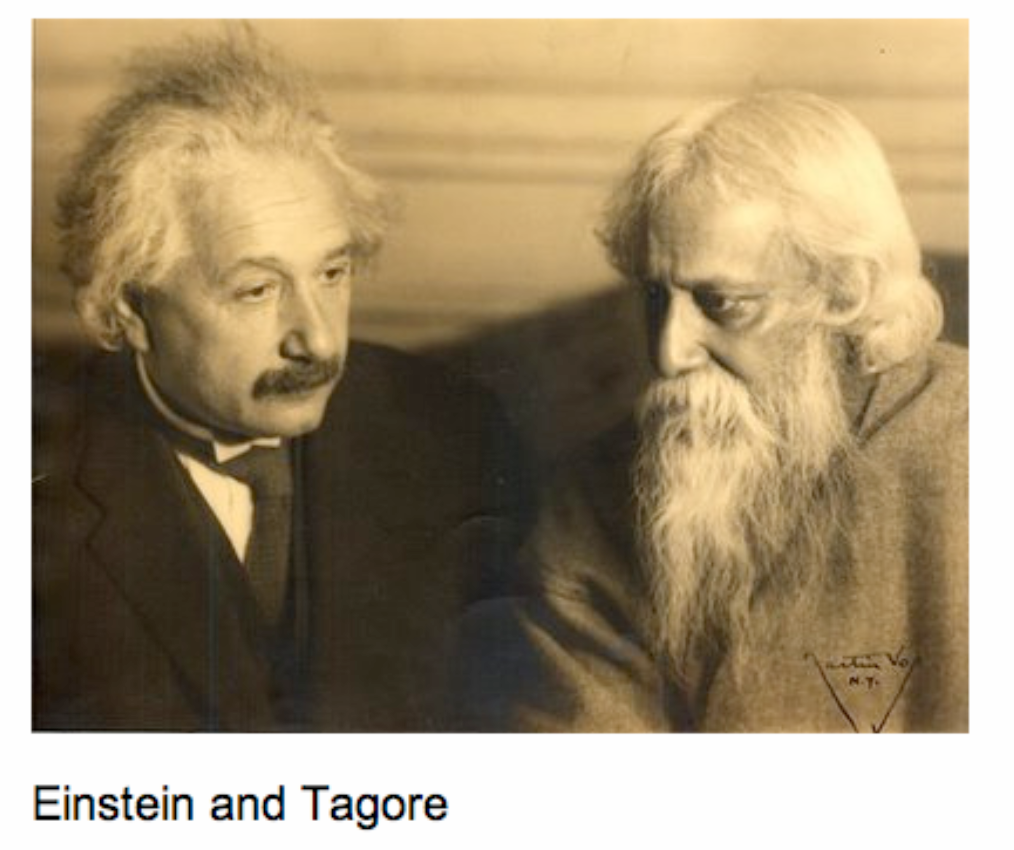14.3: The Schrödinger picture of the sequential deterministic causal operator
14.3.2: The preparation of the next section ($\S$14.4: Zeno's paradox)
The
linguistic interpretation ($\S$3.1)
says
that
which is called the Heisenberg picture
(i.e.,
a state does not move,
and,
an observable moves).
This is formal.
On the other hand,
we sometimes use
the
Schrödinger picture
(i.e.,
a state moves,
and,
an observable does not move),
which is handy and makeshift.
In this section, we explain something about
the
Schrödinger picture
in classical deterministic systems.
This section is the preparation of the next section (Zeno's paradoxes).
Let
$(T{(t_0)}, {{\; \leqq \;}})$
be an infinite tree with the root
$t_0$.
For each $t \in T$,
consider the classical basic structure:
Let
$
\{ \Phi_{t_1,t_2}{}: $
${L^\infty (\Omega_{t_2}, \nu_{t_2})}$
$ \to {L^\infty (\Omega_{t_1})},$
$ {\nu_{t_1})} \}_{(t_1,t_2) \in T^2_{\leqq}}$
be
a deterministic causal relation
with
the deterministic causal maps
$\phi_{t_1,t_2 }:\Omega_{t_1} \to \Omega_{t_2}$
$(\forall
{(t_1,t_2) \in T^2_{\leqq}}
)$.
Let
$\omega_{t_0} \in \Omega_{t_0}$
be an initial state.
Then,
the
$\{ \phi_{t_0,t} (\omega_{t_0} ) \}_{t \in T }$
(or,
$\{ \delta_{\phi_{t_0,t} (\omega_{t_0} )} \}_{t \in T }$
is called the Schrödinger picture representation.
Let
$(T(t_0), {{\; \leqq \;}})$
be an infinite tree with the root
$t_0$.
Let
$[{}{\mathbb O}_T{}]$
$=$
$[{}\{ {\mathsf O}_t \}_{ t \in T} ,
\{ \Phi_{t_1,t_2}{}: $
${L^\infty (\Omega_{t_2}, \nu_{t_2})} \to {L^\infty (\Omega_{t_1}, \nu_{t_1})} \}_{(t_1,t_2) \in T^2_{\leqq}}$
$]$
be a deterministic sequential causal observable.
Then,
the realization
$\widehat{\mathsf O}_{{t_0}{}} $
$
\equiv ({\times}_{t \in T} X_t,{{\boxtimes}_{t \in T} {\cal F}_t},
{\widehat F}_{t_0})
$
is represented by
That is, it holds that
Proof
The proof
is similar to
that of
Theorem 12.8
Definition 14.4 [State changes --- the Schrödinger picture]
The following is the infinite version of Theorem 12.8.
Theorem 14.5 [Deterministic sequential causal operator and realized causal observable]
Theorem 14.6 Let $[{}{\mathbb O}_{T(t_0)}]$ ${{=}}$ $[{}\{ {\mathsf O}^{\scriptsize{\mbox{exa}}}_t \}_{ t \in T} , \{ \Phi_{t_1,t_2}{}: $ ${L^\infty (\Omega_{t_2}, \nu_{t_2})} \to {L^\infty (\Omega_{t_1}, \nu_{t_1})} \}_{(t_1,t_2) \in T^2_{\leqq}}$ $]$ be a deterministic sequential causal exact observable, which has the deterministic causal maps $\phi_{t_1,t_2 }:\Omega_{t_1} \to \Omega_{t_2}$ $(\forall {(t_1,t_2) \in T^2_{\leqq}} )$. And let ${\widehat{\mathsf O}}_{{{t_0}}}$ ${{=}}$ $(\mathop{\Large{\mbox{ $\times$}}}_{{t} \in {T}}X_{{t}}, $ $\mathop{\Large{\mbox{ $\times$}}}_{{t}\in{{T}}} {\cal F}_{{t}},$ ${\widehat F}_{{T}} )$ be its realized causal observable in $L^\infty(\Omega_{t_0}, \nu_{t_0} )$. Assume that the measured value $(x_t )_{t\in T }$ is obtained by ${{\mathsf M}}_{L^\infty(\Omega_{t_0})} (\widehat{\mathbb O}_{T{}}$ $ {{=}} $ $(\times_{t \in T} X_t, \mathop{\Large{\mbox{ $\times$}}}_{{t}\in{{T}}} {\cal F}_{{t}} ,$ $ {\widehat F}_0), S_{[\omega_{t_0}]})$. Then, we surely believe that
\begin{align} x_t = \phi_{t_0,t } (\omega_{t_0} ) \qquad (\forall t \in T ) \end{align}Thus, we say that, as far as a deterministic sequential causal observable,
| $(a):$ | exact measured value $(x_t)_{t\in T}$ = the Schrödinger picture representation $(\phi_{t_0,t } (\omega_{t_0} ))_{t\in T}$ |
Proof
Let
$D=\{t_1,t_2,\ldots,t_n\}
(\subseteq T)$
be any finite subset
of $T$.
Put
${\widehat\Xi}=\Large{\mbox{ $\times$}}_{t\in {T}
}^D\Xi_t$
$=$
$(\times_{t\in D} \Xi_t ) \times (\times_{t\in T\setminus D} X_t ) $,
where
$\Xi_t$
$\subseteq$
$X_t ( = \Omega_t)$
is an open set
such that
$\phi_{t_0, t}
(\omega_{t_0})
\in \Xi_t$
$(\forall t\in D)$.
Then,
we see that
| $(b):$ | the probability that the measured value $(x_t )_{t\in T }$ belongs to ${\widehat\Xi}=\Large{\mbox{ $\times$}}_{t\in {T} }^D\Xi_t$ is equal to $1$. |
That is because Theorem 14.5 says that
\begin{align} & \bigl({\widehat F}_{T} ({\widehat\Xi}) \bigr) ({\omega_{t_0}}) = \Big(\times_{k=1}^n \bigl(\Phi_{t_0 , t_k} F^{\scriptsize{\mbox{exa}}}(\Xi_{t_k} ) \bigl) \Big)({\omega_{t_0}}) \\ = & \Big(\times_{k=1}^n F^{\scriptsize{\mbox{exa}}} (\phi_{t_0, t_k}^{-1}(\Xi_{t_k} ) \bigl) \Big)({\omega_{t_0}}) = \times_{k=1}^n \chi_{{}_{\Xi_{t_k}}}({\phi_{t_0, t_k} (\omega_{t_0})}) =1 \end{align}Thus, from the arbitrariness of $\Xi_t$, we surely believe that
| $(c):$ | $ (x_t )_{t\in T } = \phi_{t_0 , t} (\omega_{t_0}) \qquad (\forall t \in T) $ |
| $\fbox{Note 14.2}$ | Note that "(b) $\Leftrightarrow$(c)" in the above. That is, (b) is the definition of (c). |
Thus,
we have the following corollary,
which is the generalization of Theorem 3.15.
Corollary 14.7 [System quantity and exact observable] For each $t \in T(t_0)$, consider the exact observable ${\mathsf O}^{\scriptsize{\mbox{exa}}}_t=(X, {\cal F}_t, F^{\scriptsize{\mbox{exa}}}) (=(\Omega_t , {\cal B}_t , \chi ))$ in $L^\infty(\Omega_t, \nu_t)$ and a system quantity $g_t:\Omega_t \to {\mathbb R}$ on $\Omega_t$. Let ${\mathsf O}'_t = ({\mathbb R}, {\cal B}_{\mathbb R}, G_t)$ be the observable representation of the quantity $g_t$ in $L^\infty (\Omega_t)$. Assuming the simultaneous observable ${\mathsf O}^{\scriptsize{\mbox{exa}}}_t \times{\mathsf O}'_t$, define the sequential deterministic causal observable:
\begin{align} \mbox{ $[{}{\mathbb O}_{T(t_0)}]$ ${{=}}$ $[{}\{ {\mathsf O}^{\scriptsize{\mbox{exa}}}_t \times{\mathsf O}'_t \}_{ t \in T} , \{ \Phi_{t_1,t_2}{}: $ ${L^\infty (\Omega_{t_2}, \nu_{t_2})} \to {L^\infty (\Omega_{t_1}, \nu_{t_1})} \}_{(t_1,t_2) \in T^2_{\leqq}}$ $]$ } \end{align}Let $\phi_{t_1,t_2 }:\Omega_{t_1} \to \Omega_{t_2}$ $(\forall {(t_1,t_2) \in T^2_{\leqq}} )$ be the deterministic causal map. Let ${\widehat{\mathsf O}}_{{{t_0}}}$ ${{=}}$ $\bigl(\mathop{\Large{\mbox{ $\times$}}}_{{t} \in {T}}(X_{{t}}\times {\mathbb R}), $ $\mathop{\Large{\mbox{ $\boxtimes$}}}_{{t}\in{{T}}} ({\cal F}_{{t}}\boxtimes {\cal B}_{\mathbb R}),$ ${\widehat F}_{{t_0}} \bigr)$ be the realized causal observable. Thus, we have the measurement ${{\mathsf M}}_{L^\infty(\Omega_{t_0})} (\widehat{\mathsf O}_{t_0{}},$ $S_{[\omega_{t_0}]})$. Let $(x_t , y_t)_{t\in T }$ be the measured value obtained by the measurement ${{\mathsf M}}_{L^\infty(\Omega_{t_0})} (\widehat{\mathsf O}_{t_0{}},$ $S_{[\omega_{t_0}]})$. Then, we can surely believe that
\begin{align} x_t = \phi_{{t_0},t } (\omega_{t_0} ) \;\; \mbox{ and } \;\; y_t = g_t(\phi_{{t_0},t } (\omega_{t_0} )) \qquad (\forall t \in T ) \end{align}Remark 14.8 [Why doesn't Newtonian mechanics have measurement?]. Newtonian mechanics and quantum mechanics are formulated as follows:
| $(\sharp_1):$ | $ \left\{\begin{array}{ll} \fbox{Newtoinan mechanics} &=\qquad \color{magenta}{ \underset{\mbox{}}{\fbox{Nothing}} } \quad + \quad \underset{\scriptsize{\mbox{ (Newtonian equation)}}}{\fbox{Causality}} \\ \\ \fbox{quantum mechanics} &= \underset{\scriptsize{\mbox{ (Born's quantum measurement)}}}{\fbox{Measurement}} + \underset{\scriptsize{\mbox{ (Heisenberg (and Schrödinger) equation)}}}{\fbox{Causality}} \end{array}\right. $ |
| $(\sharp_2):$ | Why doesn't Newtonian mechanics have measurement? |
Some may think that the reason is due to Theorem 14.6 (or, Corollary 14.7 ), which says that we need only $\phi_{t_0, t }(\omega_{t_0} )$ and not $x_t$. However, this answer is shallow and surerfacial. The question $(\sharp_2)$ is significant in the light of Einstein's words:

| $(\sharp_3):$ | The moon is there whether one looks at it or not. |
in Einstein and Tagore's conversation. This should be compared with Berkley's words (i.e., To be is to be perceived ).

| $(\sharp_4):$ | $ \qquad \overset{\mbox{ no measurement}}{ \underset{\mbox{ Einstein}}{ \fbox{monistic realism (physics)} } } \quad \mbox{v.s.} \quad \overset{\mbox{measurement}}{ \underset{\mbox{Berkley}}{ \fbox{dualistic idealism ( language )} } } $ |
which means the following $(\sharp_5)+(\sharp_6)$:
| $(\sharp_5):$ | Physics should exist without measurement |
| $(\sharp_6):$ | The concept of "measurement" is metaphysical and not physical |
